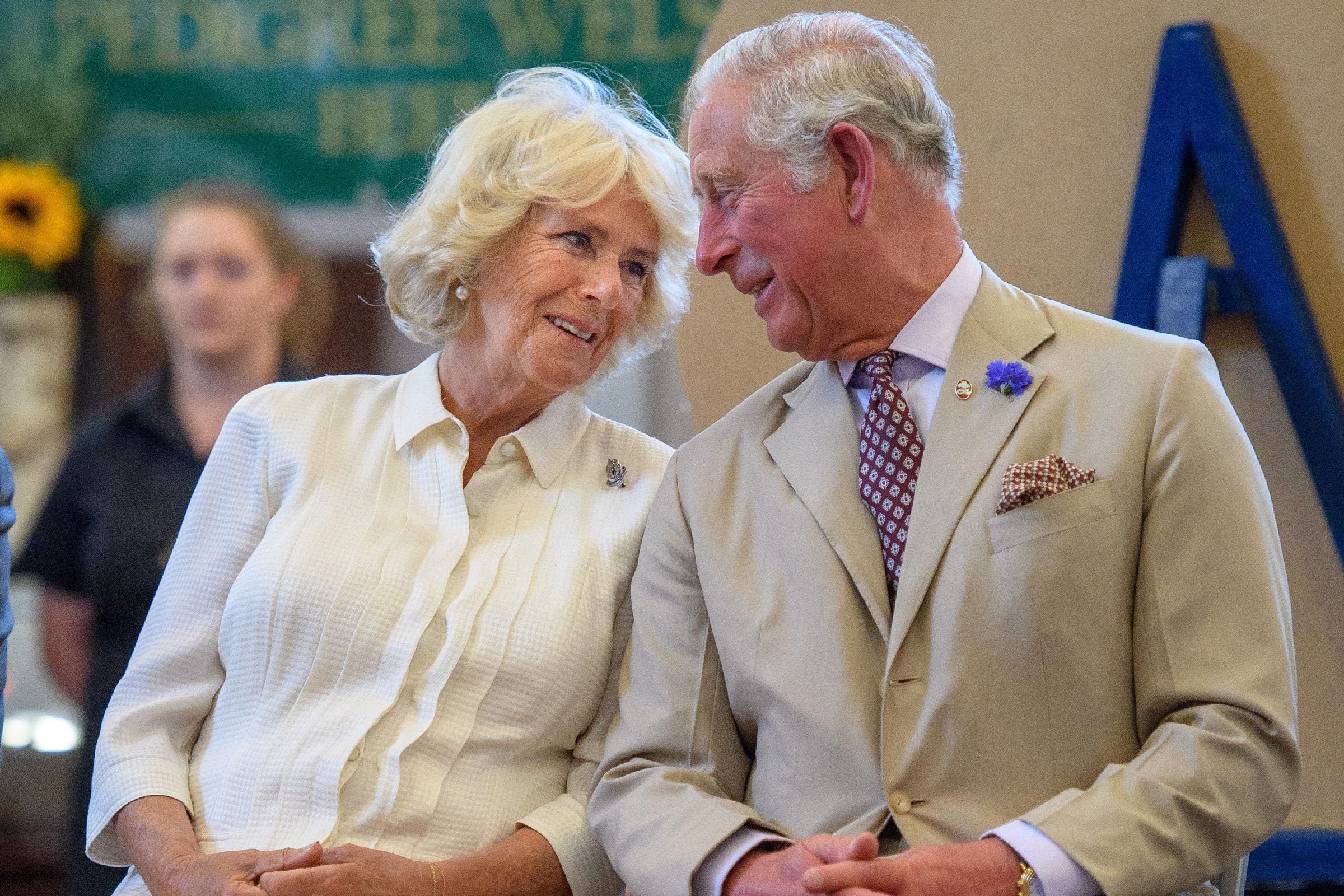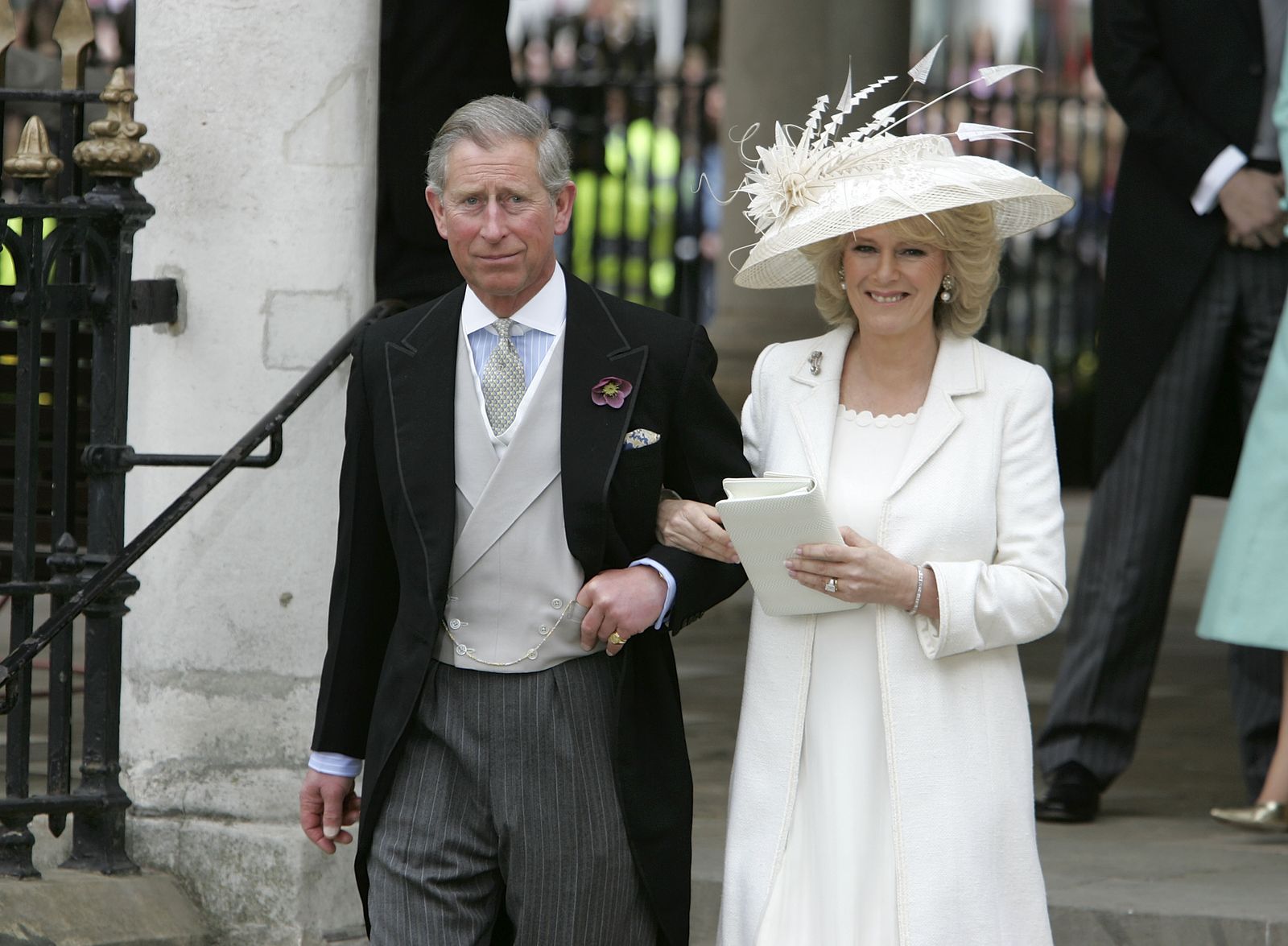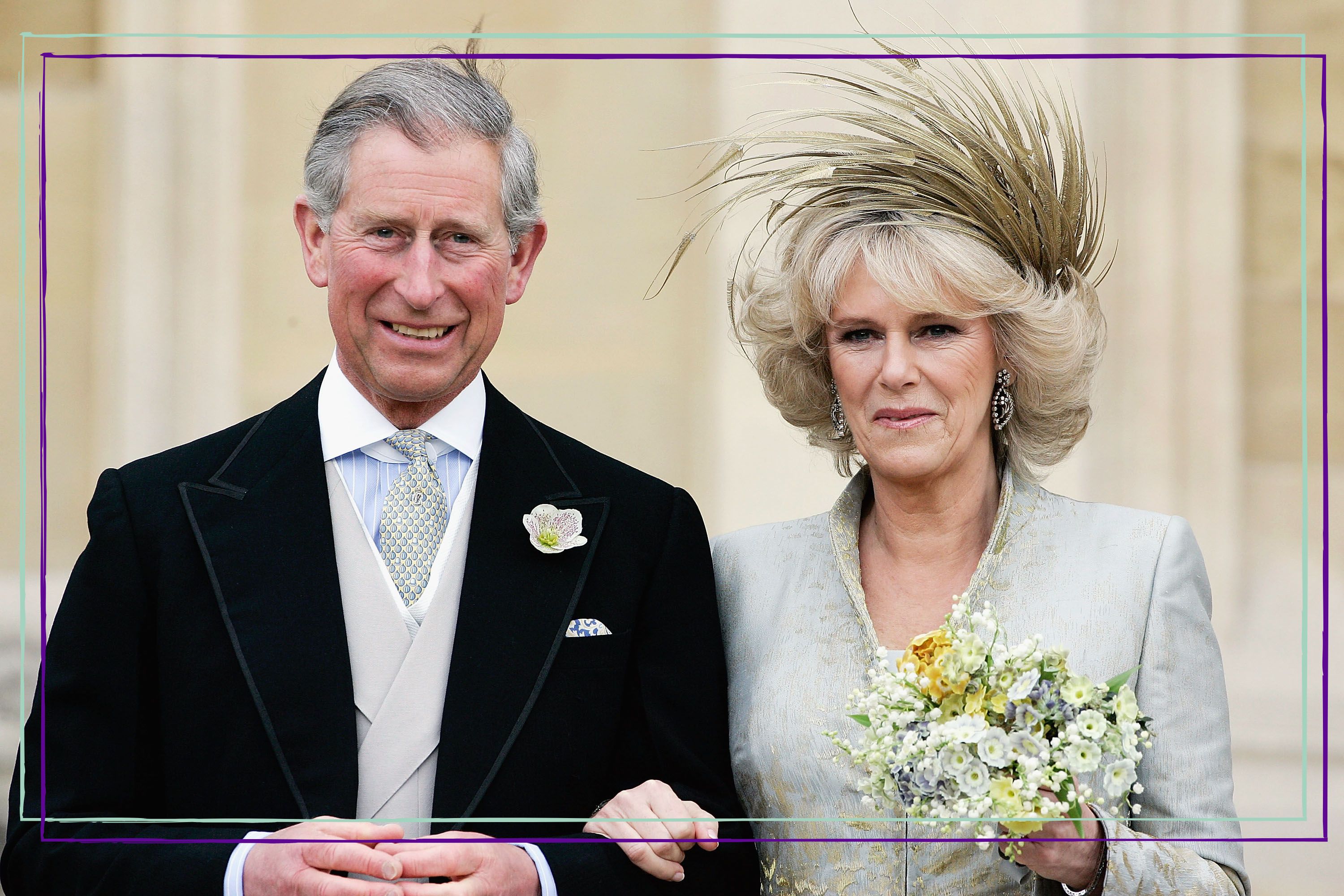For many who follow the royal family, a question often pops up about a significant moment in modern British history: when did Charles and Camilla marry? It's a question that, you know, carries a lot of weight, considering their long and rather public journey together. Their union was, in a way, a pivotal point, marking a new chapter for the British monarchy. This particular event, very much anticipated by some, and perhaps viewed with different feelings by others, finally took place after years of their relationship being in the public eye.
The story of King Charles III and Queen Camilla's path to marriage is quite a fascinating one, really, filled with many twists and turns that kept people talking for decades. It's not just about a simple date on a calendar; it's about a love story that, in some respects, unfolded against a backdrop of immense public scrutiny and, you know, a bit of controversy too. Their eventual wedding day was a moment that many had speculated about for a very long time, and it truly brought their unique narrative to a significant turning point.
This article will explore the exact timing and location of their wedding, pulling details directly from available information. We'll look at the specific date they exchanged vows, the places where their nuptials were held, and some of the circumstances surrounding this much-discussed royal event. So, if you're curious about the precise details of when did Charles and Camilla marry, you've come to the right place to get the facts straight.
Table of Contents
- Personal Details and Biography
- The Road to the Altar: A Long Journey
- The Wedding Day Unveiled: April 9, 2005
- The Setting: Windsor and Its Significance
- A Civil Ceremony and a Royal First
- Life After the Nuptials: New Titles and Roles
- Frequently Asked Questions
Personal Details and Biography
Before diving into the specifics of their wedding day, it's helpful to understand a little bit about the individuals involved, King Charles III and Queen Camilla. Their personal journeys, you know, before and leading up to their marriage, are really quite central to appreciating the significance of their union. Both had lived rather full lives, with previous marriages and significant public roles, which, in a way, shaped the path they eventually took together. Their story is, arguably, one of perseverance and a deep connection that spanned many years.
| Detail | Information |
|---|---|
| Full Name (King) | Charles Philip Arthur George |
| Full Name (Queen Consort) | Camilla Rosemary Shand |
| Previous Marriage (King) | Diana, Princess of Wales (married 1981) |
| Previous Marriage (Queen Consort) | Andrew Parker Bowles (married 1973) |
| Date of Engagement | February 2005 |
| Date of Marriage | April 9, 2005 |
| Location of Marriage | Windsor Guildhall (Civil Ceremony) & St George's Chapel, Windsor Castle (Blessing) |
| Initial Title After Marriage (Camilla) | Duchess of Cornwall |
The Road to the Altar: A Long Journey
The journey leading to when Charles and Camilla marry was, you know, certainly not a straightforward one. Their relationship, in fact, stretches back many decades before their wedding day. The couple first met a considerable time ago, and their connection, apparently, was immediate and lasting. However, circumstances at the time meant they both went on to marry other people. Camilla married Andrew Parker Bowles in 1973, and then, in 1981, Charles married Diana Spencer, who became Princess Diana.
Even after their respective marriages, Charles and Camilla maintained a very close relationship, which, as a matter of fact, became a significant part of royal history and public discussion. Their love story, it's true, is marked by scandal, and their bond was, you know, something that endured through many challenging times. This long history, spanning decades, really underscores the deep connection they shared before they could officially tie the knot.
The period leading up to their wedding was also, in some respects, quite sensitive. Nearly eight years after Princess Diana’s tragic death in a car crash, which was mourned the world over, Prince Charles, her widower and heir to the British throne, was ready to wed his longtime partner. This timing was, obviously, a very delicate consideration, and the announcement of their engagement in February 2005 was, therefore, met with a lot of public interest and, perhaps, a range of emotions.
The Wedding Day Unveiled: April 9, 2005
So, to answer the central question directly: when did Charles and Camilla marry? The royal couple tied the knot on April 9, 2005. This date, you know, became a very important one in their personal story and in the history of the British monarchy. Their engagement had only been announced two months prior, in February 2005, which, in a way, made the actual wedding day feel like a rather swift culmination of events after such a long wait.
The decision to marry in 2005 came, as a matter of fact, 18 years after they first met, which is quite a significant passage of time. It also happened 13 years after Charles' divorce from Diana, Princess of Wales. This timeline, really, highlights the long and winding path their relationship took before they could formally become husband and wife. The day itself was, apparently, a relatively quiet affair compared to other royal weddings, reflecting the nature of their journey and the circumstances surrounding their union.
The wedding on April 9, 2005, was, in short, a moment that had been anticipated by many for a very long time. It marked the official beginning of their married life together, a life that, of course, would eventually see them ascend to the roles of King and Queen Consort. The date itself is, therefore, very much etched into the annals of royal history, symbolizing a new beginning for the couple and, arguably, for the monarchy itself.
The Setting: Windsor and Its Significance
Now, as for where did Charles and Camilla get married, the location was Windsor. Specifically, their nuptials were held at Windsor, a place deeply steeped in royal tradition and history. The couple chose to have their private civil ceremony at Windsor Guildhall, which, you know, is a rather notable choice for a royal wedding. This particular venue, a historic building in the heart of Windsor, offered a more intimate setting for their vows.
Following their civil ceremony at Windsor Guildhall, Charles and Camilla received a blessing at St George’s Chapel, which is located within the grounds of Windsor Castle. This chapel is, of course, a very significant royal venue, often used for major royal events, including weddings, baptisms, and funerals. The combination of a civil ceremony at the Guildhall followed by a blessing at the chapel provided a balance between a personal, less formal start to their marriage and a traditional, spiritual acknowledgement within the royal framework.
Windsor, as a location, holds a very special place for the royal family, and its choice for the wedding of King Charles and Queen Camilla on April 9, 2005, was, in a way, a very fitting one. The historical significance of the area, you know, truly added a layer of dignity to what was, for them, a deeply personal event. The fact that they held their nuptials at Windsor, a place synonymous with the monarchy, underscored the importance of their union within the royal institution.
A Civil Ceremony and a Royal First
The nature of their wedding ceremony was, as a matter of fact, quite unique for a British royal. Charles was the first British royal to ever marry in a civil ceremony. This choice, you know, marked a significant departure from centuries of royal tradition, where church weddings were the norm. It was a decision that, in some respects, reflected the changing times and the personal circumstances of the couple, particularly given that both Charles and Camilla had been married before.
Their intimate civil ceremony at Windsor Castle on April 9, 2005, was, apparently, a rather small affair, with only 28 guests present. This very limited guest list suggests a desire for a more private and understated celebration, especially when compared to the grand scale of previous royal weddings. The focus was, it seems, more on the union itself rather than a large public spectacle, which, in a way, made it quite a personal event for them.
Both Charles and Camilla had been married prior to their April 9, 2005, nuptials. Prince Charles, of course, was married to the late Diana, Princess of Wales, and Camilla had been married to Andrew Parker Bowles, the father of her children. This history, you know, certainly played a role in the decision to opt for a civil ceremony, which is a legally recognized marriage outside of a religious institution. It was, arguably, a practical and respectful choice given their individual pasts, allowing them to formalize their union in a way that acknowledged their unique journey.
Life After the Nuptials: New Titles and Roles
Following their wedding on April 9, 2005, Camilla received the title of Duchess of Cornwall. This was, in a way, her primary title and public identity for many years as Prince Charles’s wife. The title, you know, reflected Charles’s status as the Duke of Cornwall, a traditional title held by the heir to the throne. Her role as the Duchess of Cornwall saw her supporting Charles in his many duties and engagements, becoming an increasingly visible and active member of the royal family.
Their marriage in 2005 marked a significant turning point, not just for them personally, but also for the monarchy. Camilla at Charles and Diana’s wedding had, of course, become an essential part of royal history, and her eventual marriage to Charles in 2005 symbolized a new era. It showed, in some respects, a monarchy that was, you know, adapting to modern circumstances and personal relationships. Their union was, truly, the culmination of a very long and enduring connection that had spanned decades.
As of [Current Date], King Charles III and Queen Camilla continue to serve the nation, with their marriage having provided a stable and supportive partnership for many years. Their journey from their wedding day on April 9, 2005, to their current roles has been one of consistent public service and, you know, a deepening of their shared commitment. Learn more about their royal duties on our site, and link to this page for more historical context about their relationship. For further details on the British Monarchy, you might want to visit a reputable royal history site, which, you know, offers a wealth of information.
Frequently Asked Questions
People often have more questions about this particular royal wedding, so here are a few common ones, you know, that come up quite a bit.
Was King Charles the first royal to have a civil wedding?
Yes, as a matter of fact, Charles was the first British royal to ever marry in a civil ceremony. This choice, you know, was a departure from long-standing tradition within the royal family, where religious ceremonies had always been the standard for royal weddings.
How long after Diana's death did Charles marry Camilla?
Prince Charles married Camilla on April 9, 2005, which was nearly eight years after Princess Diana’s death in a car crash. Her passing, you know, occurred in August 1997, so there was a considerable passage of time before Charles remarried.
How many guests attended Charles and Camilla's wedding?
The civil ceremony for Charles and Camilla at Windsor Castle on April 9, 2005, was, apparently, a very intimate event. The couple only had 28 guests present, making it a rather private affair compared to other royal nuptials.



Detail Author:
- Name : Syble Mueller
- Username : rosie51
- Email : dominique81@gmail.com
- Birthdate : 1988-10-11
- Address : 784 Lubowitz Rue Apt. 848 Port Gerardchester, IL 32452
- Phone : 1-703-956-2065
- Company : Robel, Gaylord and Glover
- Job : Wellhead Pumper
- Bio : Voluptas suscipit ea nihil tempore consequuntur. Nisi veritatis mollitia eum quae. Sit qui explicabo et hic error hic quis ut.
Socials
twitter:
- url : https://twitter.com/cjerde
- username : cjerde
- bio : Cumque velit quia laboriosam laborum qui incidunt. Iste qui inventore error nobis beatae. Repellat modi tempore ut quod.
- followers : 187
- following : 2054
linkedin:
- url : https://linkedin.com/in/christyjerde
- username : christyjerde
- bio : Earum aut quis omnis numquam amet.
- followers : 4575
- following : 765
tiktok:
- url : https://tiktok.com/@christy_dev
- username : christy_dev
- bio : Dolor ratione et vel.
- followers : 5865
- following : 2439
instagram:
- url : https://instagram.com/christy8208
- username : christy8208
- bio : Placeat ducimus commodi ea esse. Minus doloribus dolor debitis. Qui esse sunt debitis aut.
- followers : 1895
- following : 199